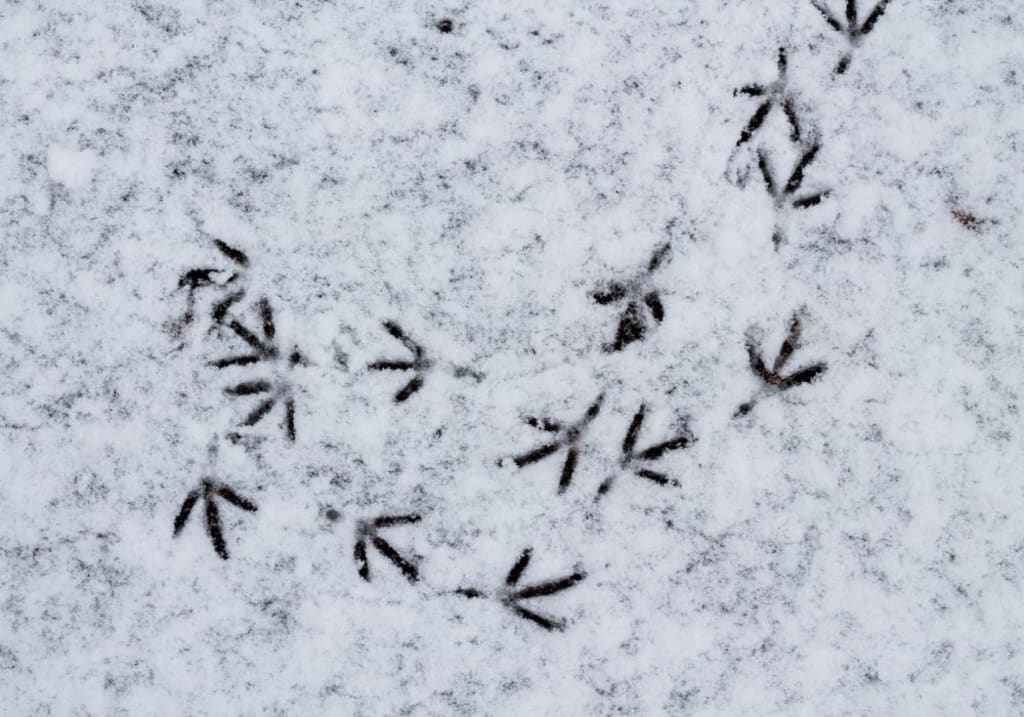Decoding the Secrets of Bird Tracks in the Snow
Unlock the Hidden Stories

Unlock the Hidden Stories of Avian Movements with This Comprehensive Guide
Birds are a captivating part of the winter landscape, leaving behind a trail of clues in the snow that tell the tales of their daily lives. Whether you're an avid birder or simply curious about the wildlife around you, learning to identify bird tracks can open up a whole new world of discovery.
In this comprehensive guide, we'll dive deep into the art of reading bird tracks, equipping you with the knowledge and skills to become a winter wildlife detective. From understanding the different types of bird gaits to mastering the unique characteristics of various species, you'll be able to unravel the hidden stories written in the snow.
Preparation: Gather Your Tools for Snow Tracking Success
Before you venture out into the winter wonderland, make sure you have the right tools to maximize your tracking experience:
- Field Guide: Invest in a reliable field guide that covers bird tracks and signs. Some great options include "Bird Tracks & Sign" by Mark Elbroch and "Tracking and the Art of Seeing" by Paul Rezendes.
- Ruler: Bring a ruler to measure the size and dimensions of the tracks you encounter, as this can be a crucial clue in identification.
- Camera: Capture the tracks you find to reference later or share with others for identification.
- Notebook: Keep a record of your observations, including the location, habitat, and any other relevant details.
Reading the Landscape: Clues in the Environment
The first step in identifying bird tracks is to take a close look at your surroundings. The habitat and landscape can provide valuable insights into the species you're likely to encounter:
- Forested Areas: Look for tracks of birds that frequent wooded environments, such as woodpeckers, nuthatches, and chickadees.
- Open Fields and Grasslands: These areas are home to ground-dwelling birds like sparrows, larks, and meadowlarks.
- Near Water: Waterfowl like ducks, geese, and herons often leave their mark in the snow near ponds, lakes, and streams.
- Urban Settings: City-dwelling birds, such as pigeons, starlings, and house sparrows, may leave tracks in parks, gardens, and other urban areas.
Deciphering the Gait: Understanding Bird Locomotion
The way a bird moves through the snow can be a significant clue in identifying the species. Pay attention to the overall pattern and arrangement of the tracks, as this can reveal the bird's gait:
- Hopping: Tracks arranged in pairs, with each foot planted right next to the other, indicate a hopping gait. This is common in birds that spend a lot of time perched, such as chickadees, titmice, and cardinals.
- Skipping: Staggered pairs of tracks suggest a skipping gait, often seen in ground-foraging birds like sparrows, robins, and buntings.
- Walking or Running: Evenly spaced single footprints indicate a walking or running gait, typical of larger birds like grouse, gulls, and raptors.
Identifying Key Features: Decoding the Tracks
Once you've considered the landscape and the bird's movement pattern, it's time to focus on the specific details of the tracks themselves. Look for the following characteristics to help narrow down the species:
- Size: Measure the length and width of the tracks to get a sense of the bird's overall size. This can help differentiate between smaller songbirds and larger waterfowl or raptors.
- Toe Arrangement: The number and arrangement of toes can be a distinctive feature. For example, three-toed tracks may indicate a grouse or ptarmigan, while four-toed tracks could belong to a sparrow or finch.
- Claw Marks: The presence and shape of claw marks can provide clues about the bird's behavior, such as whether it was foraging or taking flight.
- Tail and Wing Impressions: In some cases, you may even find tracks that include the imprints of a bird's tail or wings, offering additional insights into its movements.
Putting It All Together: Solving the Tracking Puzzle
By combining your observations of the landscape, the bird's gait, and the specific track features, you can start to piece together the identity of the feathered visitor. Remember, some tracks may be more challenging to identify than others, but with practice and patience, you'll become a skilled winter wildlife detective.
Here are a few examples of how to apply your tracking skills:
- Hopping Tracks in the Forest: If you find a series of paired tracks in a wooded area, you're likely looking at the prints of a chickadee, nuthatch, or titmouse.
- Staggered Tracks in the Grassland: Skipping tracks in an open field could belong to a sparrow, lark, or bunting foraging for seeds.
- Large, Four-Toed Tracks near Water: Webbed feet and a distinctive shape may indicate the presence of a duck, goose, or heron.
As you explore the winter landscape, keep an open mind and be prepared to encounter the unexpected. The joy of tracking lies in the journey of discovery, where each new set of tracks opens up a window into the hidden lives of our feathered friends.
So bundle up, grab your gear, and venture out into the snow-covered world. Who knows what avian adventures await you?
About the Creator
Hasan
Welcome...
In this site of mine you can learn amazing things and many information that you don't know so please subscribe to my site.
Enjoyed the story? Support the Creator.
Subscribe for free to receive all their stories in your feed. You could also pledge your support or give them a one-off tip, letting them know you appreciate their work.






Comments
There are no comments for this story
Be the first to respond and start the conversation.